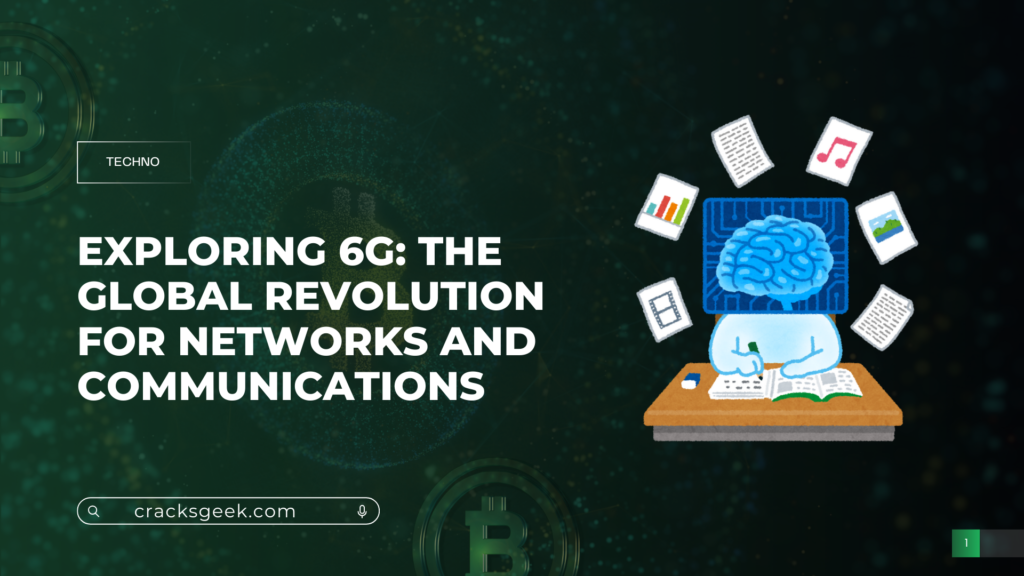Introduction
Since technology is growing at a record pace, the transition from 5G to 6G is already on the horizon. With a goal to transform the world’s communications and networks, 6G will introduce ultra-high speeds, low latency, and global connectivity. The next-gen wireless technology will not only enhance user experience but transform industries, enabling us to achieve things we have so far only dreamt about. Let’s see how 6G is going to be the total game-changer.
1. Lightning-Speeds
One of the most anticipated benefits of 6G is its lightning-fast data speed, which will be 100 times faster than 5G. Downloads in minutes now will be seconds. The speeds will facilitate high-definition streaming, real-time data processing, and faster cloud computing.
For business, this faster rate of growth will introduce new dimensions of automation, AI, and IoT (Internet of Things). Sector domains such as healthcare, manufacturing, and entertainment will witness the efficiency and productivity increase exponentially.
2. Ultra-Low Latency
6G will minimize latency to a highly critical degree, with virtually instantaneous communication. This will revolutionize use cases requiring real-time response, e.g., driverless cars, remote surgery, and virtual reality.
Lower latency will also boost online gaming, with more fluid and interactive sessions. Whether one is operating robotic systems from all over the world or working in real-time collaboration, 6G’s low-latency function will provide connectivity like never before.
3. AI-Driven Network Management

Artificial intelligence (AI) will be the force that enables managing 6G networks. Unlike previous generations, 6G will use AI to improve data transmission, detect and repair network issues in real time, and predict system failure before it occurs.
Autonomous network management will boost performance, reduce downtime, and offer a stable and secure connection to users worldwide. Businesses with round-the-clock digital operations will get maximum benefit from AI-enabled connectivity.
4. Massive IoT Integration
6G will enable frictionless connectivity of billions of IoT devices, bringing the world to an ultra-connected world. From homes and cities to all other walks of life, everything will be interconnected with little human intervention.
This advanced IoT infrastructure will lead to more automation in agriculture, logistics, and healthcare sectors. Smart sensors, wearables, and connected infrastructure will bring efficiency, safety, and convenience on a never-before scale.
5. Holographic Communication and Immersive Experience
The most futuristic of all 6G features is the fact that it would allow for real-time holographic communication. In contrast to the conventional video conference, holographic communication would be 3D, real, and as such would make remote meetings more interactive.
Outside business applications, the technology will redefine entertainment, learning, and communication. Imagine attending concerts, speeches, or business meetings in an immersive virtual environment where the viewers are actual three-dimensional holographic images rather than two-dimensional video projections.
6. Enhanced Security and Privacy
With more interconnectedness, there has to be more security provisions. 6G networks will have advanced encryption methods and artificial intelligence–based cyber protection measures in place to prevent data breaches and cyber attacks.
Biometric authentication, quantum encryption, and distributed network design will be at the forefront of ensuring 6G communications are secure. The heightened security will matter most to companies that handle sensitive data, such as finance, healthcare, and government.
7. Green and Energy-Efficient Networks
Unlike the earlier generations, 6G will focus on energy efficiency and sustainability. As climate change concerns rise, 6G networks will be optimized to use less energy but offer great performance.
By using AI to maximize resource utilization and hardware designed to be energy efficient, 6G will help minimize the overall carbon footprint of communication systems. This will be in line with international efforts to produce greener, eco-friendlier technology.
8. Connecting the Digital Divide and Connectivity Across the Globe
6G will provide end-to-end connectivity to the internet even to remote locations, thus filling the digital divide. With cutting-edge satellite technology and high-altitude network infrastructure, remote locations will be empowered with high-speed internet.
This mass connectivity will bring enhanced education, healthcare, and economic opportunities to societies otherwise devoid of dependable internet connectivity. 6G’s universal reach can reshape economies and empower human beings as never before.
9. Quantum Computing and Quantum Communication
The connection of 6G with quantum computing and quantum communication is the most revolutionary aspect of 6G. Quantum encryption will provide an additional layer of protection to data, and networks will be nearly un-hackable.
In addition, quantum computing will open the door to the solution of many problems, and this will benefit scientific research, financial analysis, and AI technologies. This will lead to a new generation of computer power altogether.
10. The Future of 6G and What’s Next

While 6G is still in its initial stages of development, studies and trails have already commenced. Leading technology corporations, governments, and research institutes are good investors in developing such technology into reality.
In 2030, we will see the initial commercial 6G network implementations that will change our communication, working, and living styles. The impact of 6G will be huge as it will set the foundation for a hyper-connected, intelligent digital world.
Conclusion
6G has the potential to reshape global networking and communication on an unimaginable level. From exponentially fast speeds and AI-driven networks to holographic interfaces and quantum-based security, 6G will map new frontiers in technology and connectivity. The more we research, the closer we are to becoming a step nearer to an age of unbroken communication, automation, and digital expansion. With 6G, anything is possible, and it will reverberate through various industries and communities worldwide.
FAQs
1. When will 6G be available?
6G will be commercially available in 2030, though testing and research have already started.
2. How much faster is 6G compared to 5G?
6G will be 100 times faster than 5G, with real-time data transfer and uninterrupted connectivity.
3. Will 6G require new devices?
Yes, new infrastructure and hardware will be needed to accommodate 6G’s capabilities to their fullest.
4. How will industries be impacted by 6G?
6G will transform healthcare, manufacturing, entertainment, and financial sectors through automation, AI-based processes, and ultra–fast communication.
5. Where is AI positioned in 6G networks?
AI will improve network performance, manage data traffic, enhance security, and enable predictive maintenance for reliability improvement.






